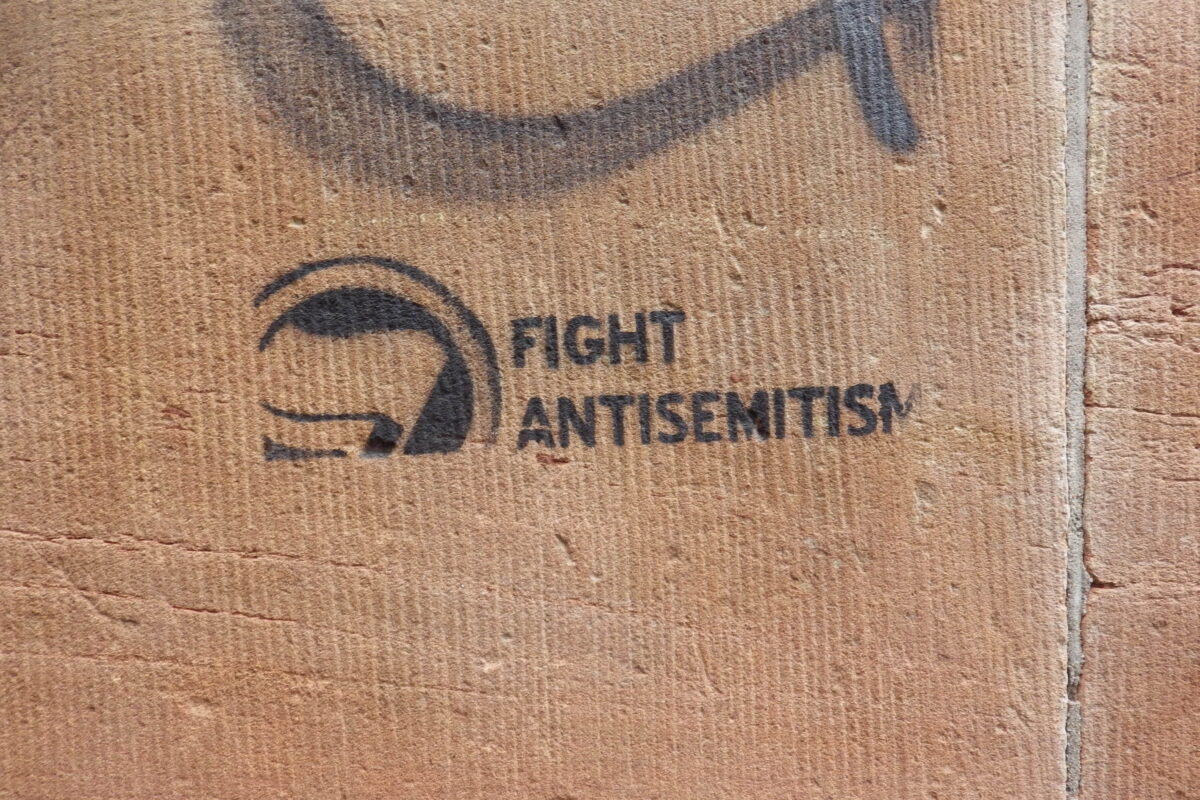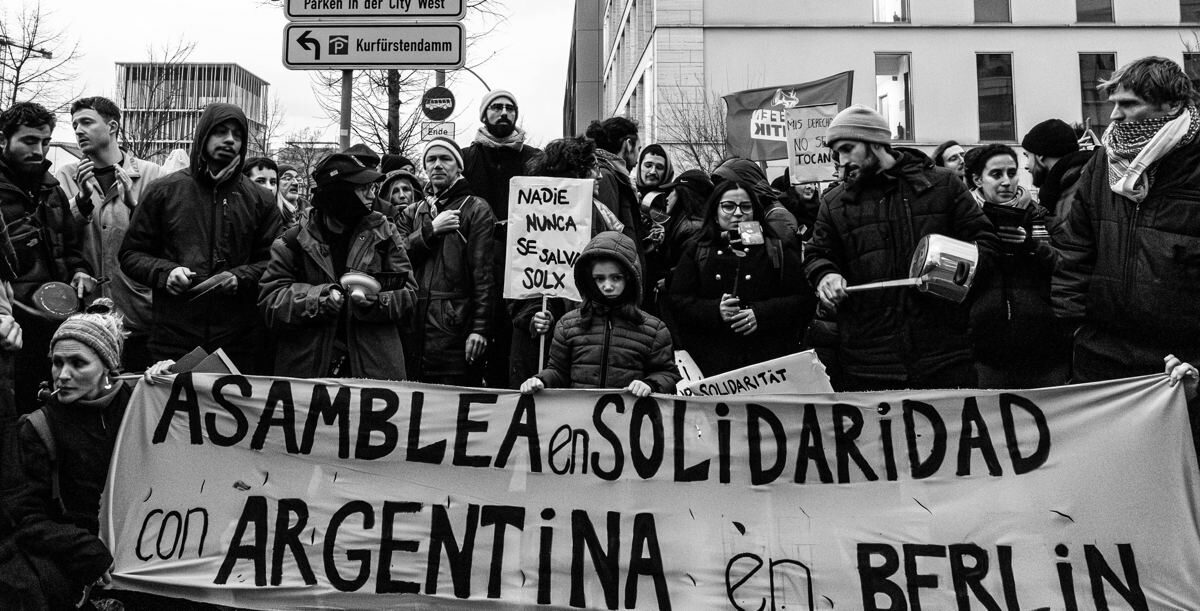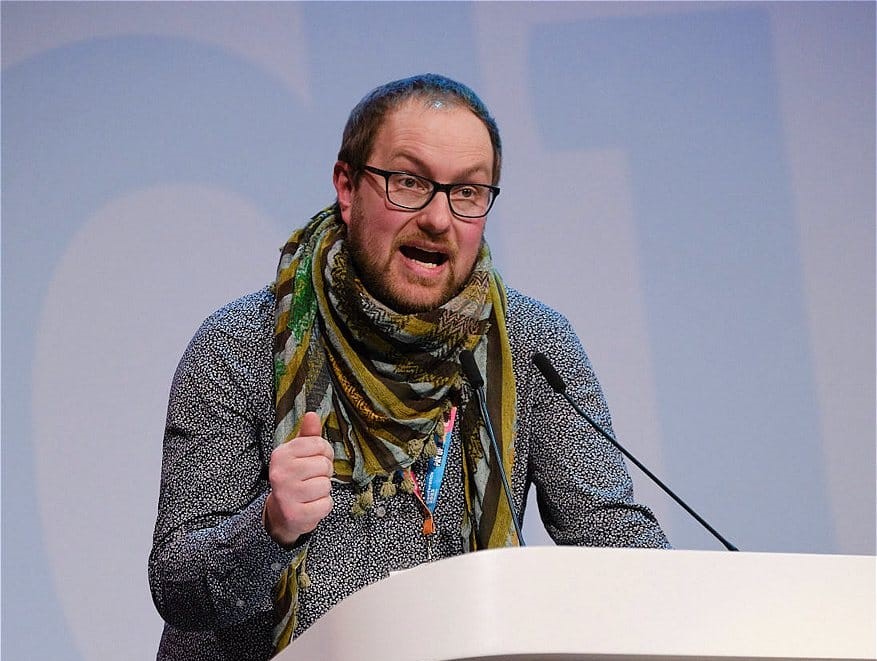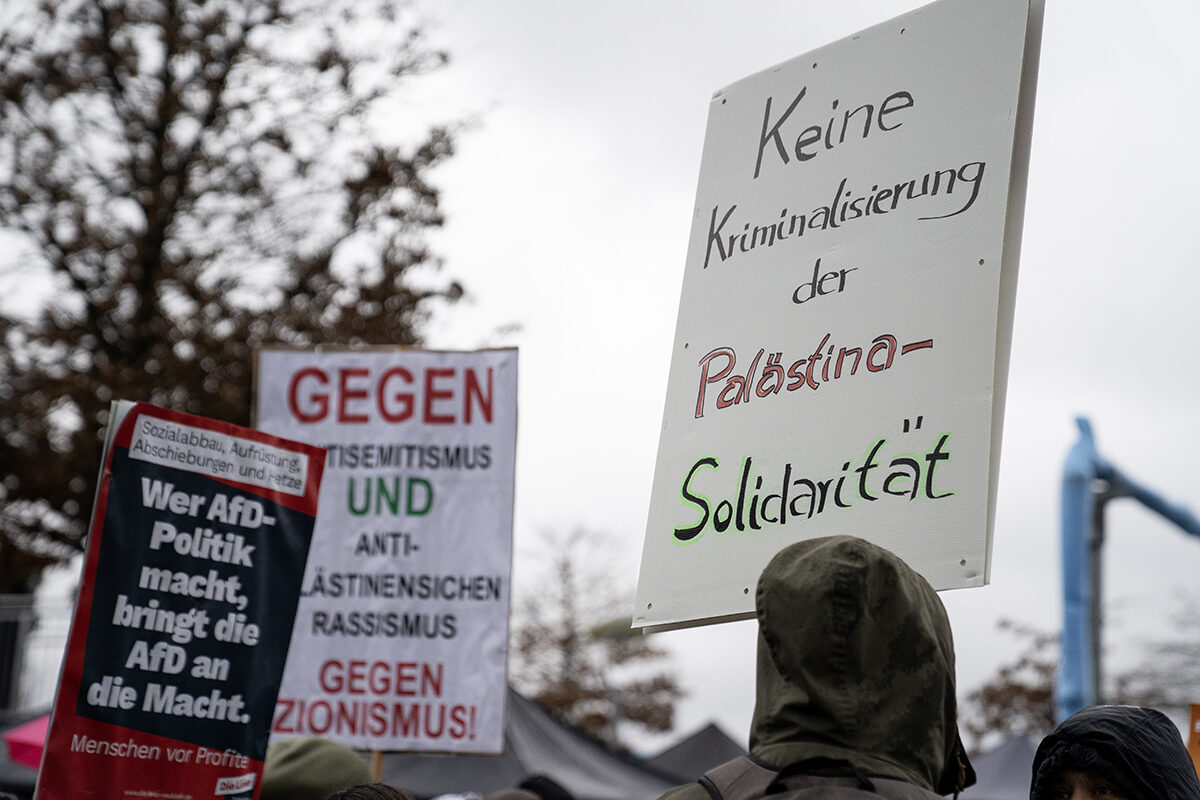Hello everyone,
This week’s Palestine demos start this afternoon (Thursday) at midday, around the same time as this Newsletter goes out. The demonstration End the Lies and Hypocrisy! Freedom for Palestine! is organised by the Palestine Committee at the FU. It starts at Otto-von-Simson Straße 26. Tomorrow there is a rally Give Access to Aid, protesting against the defunding of the UNRWA aid agency by Germany and other countries. The rally takes place at 12.30pm to 2pm at the Ministry of Economic Cooperation and Development, Stresemannstraße 94. On Saturday, there’s a demonstration Boycott Siemens! Freedom for Palestine! starting at 2pm at Hermannplatz.
There is a change to the schedule for this evening’s Film On Israel in Café MadaMe, Mehringplatz 10 at 7pm. Instead of the advertised film, tonight you can see Voices from Gaza. Voices from Gaza was shot in 1987/88, during the first intifada. In the film, the people of Gaza (most of whom are refugees) tell their story. Palestinian men, women, and children speak frankly about the effect of Israel’s occupation on their lives, but also about the work of local “popular committees,” through which they provide each other with alternative education, health care, and welfare services, even under the daunting conditions of occupation. Although screened internationally at the time – also in the USA — television stations in the USA refused to air the film.
On Saturday at 3pm, the Museum Charlottenburg-Wilmersdorf is organising a talk Indian Anti-Colonialism in Weimar Berlin: Transnational Networks and Revolution from a Distance with Dr. Ole Birk Laursen. In 1920s Berlin, the German capital was a hub for anti-colonial revolutionaries in exile, including many Indian veteran revolutionaries as well as newcomers. They established new anti-colonial organisations, sometimes in collaboration with other exiled revolutionaries, sometimes with their own national agenda; they organised social events and fierce protests against racism and imperialism; they negotiated transnational networks, global politics, repression, and deportation; and they plotted revolution from a distance.
Also on Saturday, the POC Art Collective and LINKE Berlin Internationals are organising a Film and discussion on Gaza. At 5pm, you can see the documentary, “Aisheen, Still Alive in Gaza”. “Where is the ghost town?”, asks the little boy to the theme park attendant. “It’s there, right there. But it has been bombed… Do you want to see it?” It is with these words that the film, Aisheen, begins – an impressionist journey through a devastated Gaza after the war in 2009. And the ghost town? Gaza is the ghost town. Food will be offered at 6.30pm followed by a discussion with Gazan socialist and feminist Fida’a Al-Jaazin about the current situation in Gaza. The event takes place in Bilgisaray, Oranienstraße 45.
On Sunday, at 3pm (NOTE: an hour later than the normal start time), it’s the latest Berlin LINKE Internationals Walking Tour: This City Kills Fascists. Horst Wessel was a young leader of the Nazi Party in the working-class neighborhood of Friedrichshain. On January 14, 1930, he was shot in his apartment, and he died a month later. Joseph Goebbels turned him into the Nazis’ principle martyr. Our tour will be meeting in front of Kino International, Karl-Marx-Allee 33, U5 Schillingstraße. We will meet at 15:00 and leave by 15:10. The tour will end two hours later near Rosenthaler Platz. We will not be using public transportation — the tour will be entirely outside. If you register by e-mail, you will receive handouts for the tour some time on Saturday.
Also on Sunday, it’s our latest Palestine Reading Group, this time on How other Countries were liberated. Click here to register and to view the recommended reading. The Palestine Reading Group takes place every week at 7pm in the Agit offices, Nansenstraße 2. This means that the next group (on Violence of the Oppressed) will be on Friday, February 16th, Future dates for Reading Groups are posted on our Events page. You can also join our Telegram Group to keep up with the debate and suggest future subjects or readings.
On Tuesday, the Tech Workers Coalition is organising an online Event Bringing Palestine Solidarity to Your Workplace. A panel of tech workers from 3 differently-sized companies will share their experiences and reflections on engaging their executive leadership. As the meeting is mainly for an audience in the US, the starting time is 2am, but people in Berlin can register here.
There is much more going on in Berlin. To find out what’s happening, go to our Events page. You can also see a shorter, but more detailed list of events in which we are directly involved in here.
If you are looking for Resources on Palestine, we have set up a page with useful links. We will be continually updating the page, so if you would like to recommend other links, please contact us on team@theleftberlin.com.
This week’s Campaign of the Week is Fund Healthcare not Warfare, whose Berlin branch was launched this week. Whilst our government’s budget drastically increases, healthcare services continue to be precarious. This is in tandem with the relentless politicisation of and assaults on trans and reproductive healthcare, the ongoing COVID-19 pandemic, and the housing crisis. Our governments must FUND HEALTHCARE, NOT WARFARE. Palestinians deserve to live with freedom and dignity. Everyone deserves access to healthcare. The next ‘Fund Healthcare Not Warfare’ Berlin chapter meeting will be announced ASAP. Please follow @danglassmincer for updates.
In News from Berlin, the Berlinale is under fire for inviting AfD politicians, and memorial plaque to “euthanasia” victims of the Nazis is vandalised.
In News from Germany, hundreds of thousands demonstrate throughout the country against the AfD, Lufthansa ground staff set to strike, and Letzte Generation plan new strategies.
Read all about it in this week’s News from Berlin and Germany.
New on theleftberlin, Nathaniel Flakin argues that homelessness in Berlin is a deliberate government plan, Egyptian activist Heba Attia Mousa calls on White German activists to recognise the exclusion of the victims of racism from anti-racist demos, the latest photo and cartoon from Palestinian artists Rasha Al-Jundi and Michael Jabareen, Dr. John Puntis critiques the Labour Party’s plan for health care in Britain, Phil Butland asks how can we stop the AfD?, we interview Chris Denson from the National Executive of the British teachers’ union about trade unions and Palestine, the “asamblea en solidaridad con argentina” look at the latest protests against Argentinian president Javier Milei, and Jewish socialist Rowan Gaudet examines the latest statistics about rising antisemitism in Germany.
In this week’s Video of the Week, Jewish socialist Rachael Shapiro reports on the abuse which she experienced on last week’s demonstration against the AfD.
You can follow us on the following social media:
- We also support the Berlin LINKE Internationals facebook page.
If you would like to contribute any articles or have any questions or criticisms about our work, please contact us at team@theleftberlin.com. And please do encourage your friends to subscribe to this Newsletter.
Keep on fighting,
The Left Berlin Editorial Board




